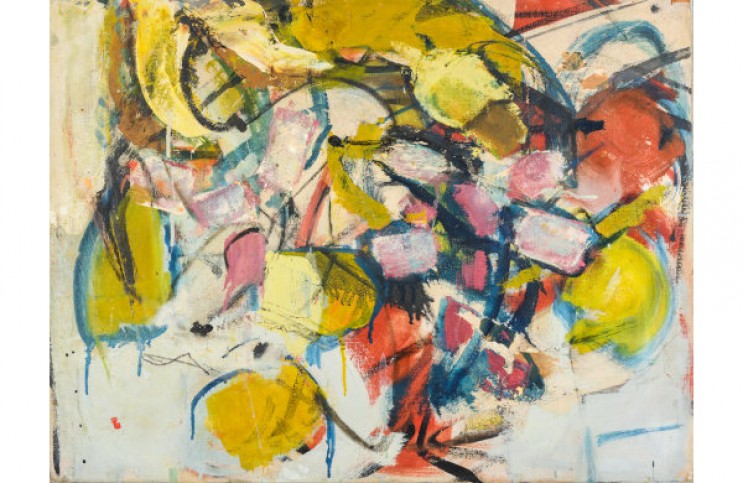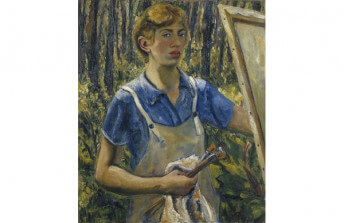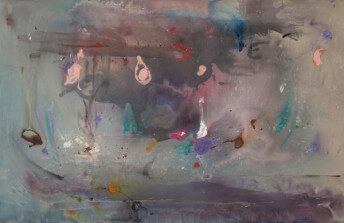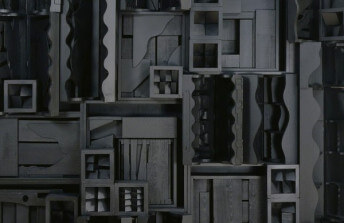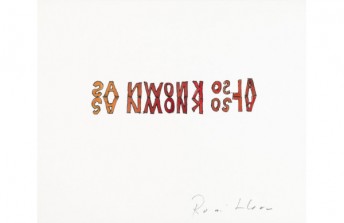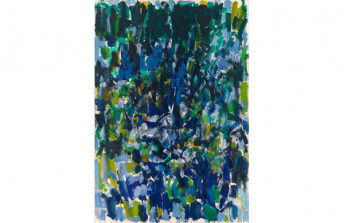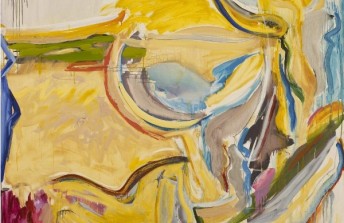Female Abstract Artists Finally Get in The Much-Overdue Spotlight
Oct 30, 2019
The Katonah Museum of Art in New York recently spotlighted overlooked female abstract artists from the past in an exhibition titled Sparkling Amazons: Abstract Expressionist Women of the 9th St. Show. The exhibition reunites for the first time the female artists who exhibited in the famous 9th Street Show of 1951. The 9th Street Show is considered to have been the coming out party for the Abstract Expressionists. Held the same year that the notorious photo of The Irascibles appeared in Life Magazine, the show featured works by 64 artists. Curator Leo Castelli selected 53 male artists to be in the show; the eleven women he selected were Helen Frankenthaler, Grace Hartigan, Elaine de Kooning, Lee Krasner, Joan Mitchell, Perle Fine, Anne Ryan, Sonja Sekula, Day Schnabel, Guitou Knoop and Jean Steubing. According to Katonah Museum curator Michele Wijegoonaratna, “Sparkling Amazons” was one of the nicknames these 11 women were given by their contemporaries—ergo the title of their reunion exhibition. Looking over this list of names, however, not all of them have achieved the legendary, heroic status one would expect of someone nicknamed Amazon. Several are instantly recognizable—Helen Frankenthaler, Grace Hartigan, Elaine de Kooning, Lee Krasner, and Joan Mitchell are all featured in the landmark book Ninth Street Women (2018), and two others—Perle Fine and Sonja Sekula—have been featured in at least half a dozen retrospectives of the New York School in recent decades. Anne Ryan, however, has not been exhibited in nearly 30 years. Meanwhile, Guitou Knoop and Jean Steubing (as of the writing of this article) do not even have Wikipedia pages, and the Day Schnabel page is barely a stub. The stated point of Sparkling Amazons is to “address” the fact that the work of these women has not been properly addressed by history. Yet, as inspiring and overdue as this exhibition is, I cannot help but wonder how many other female abstract artists from the past still remain overlooked.
Gender and Data
A study released in February 2019 analyzed 40,000 works from the collections of 18 major museums, including the Detroit Institute of Arts, the MET, the Museum of Fine Arts, Boston, the National Gallery of Art, the Philadelphia Museum of Art, the Art Institute of Chicago, the Denver Art Museum, LACMA, the Museum of Fine Arts, Houston, the Museum of Contemporary Art, Los Angeles, MOMA, SFMOMA, and the Whitney. It revealed that 87 percent of the artists represented in those collections are men. The MET had the lowest percentage of women in its collection (7.3) and MOCA Los Angeles had the highest (24.9). Worse yet, according to a study released in September 2019 by Artnet News, female representation in museum collections is actually trending downward, as works by female artists accounted for only “11 percent of all acquisitions at 26 prominent American museums” in the past decade.
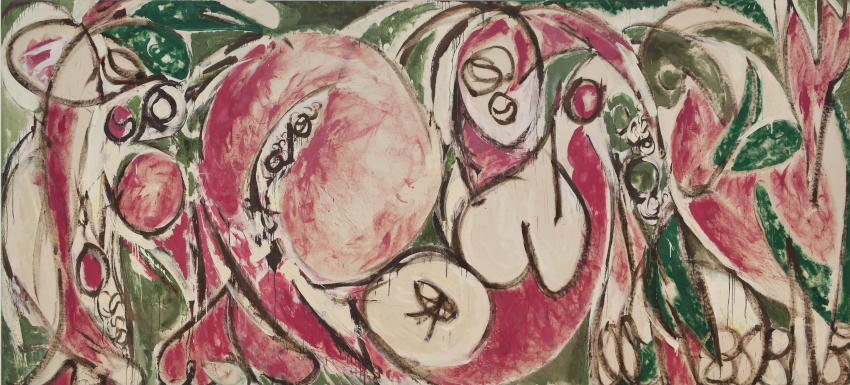
Lee Krasner - The Seasons, 1957. Oil and house paint on canvas. 92 3/4 x 203 7/8 in. (235.6 x 517.8 cm). Whitney Museum of American Art, New York; Purchase, with funds from Frances and Sydney Lewis by exchange, the Mrs. Percy Uris Purchase Fund and the Painting and Sculpture Committee 87.7 © 2019 The Pollock–Krasner Foundation/Artists Rights Society (ARS), New York
High profile exhibitions like Sparkling Amazons, Hilma af Klint at the Guggenheim, Anni Albers at Tate Modern, or the landmark 2016 exhibition Women of Abstract Expressionism at the Denver Art Museum are a start. But they unfortunately rely completely on female abstract artists who have already made at least some impression on the public. For example, six of the artists in Sparkling Amazons were also in Women of Abstract Expressionism. The likely reason for this, as the Guardian speculated in a recent article, is that museums have to justify their exhibitions with high visitor numbers. They fear that the public will not want to show up to see works by unknown artists. I understand this, but is the job of a museum really just to play to the tastes of the public? Or is its role supposed to be to help shape the public tastes?
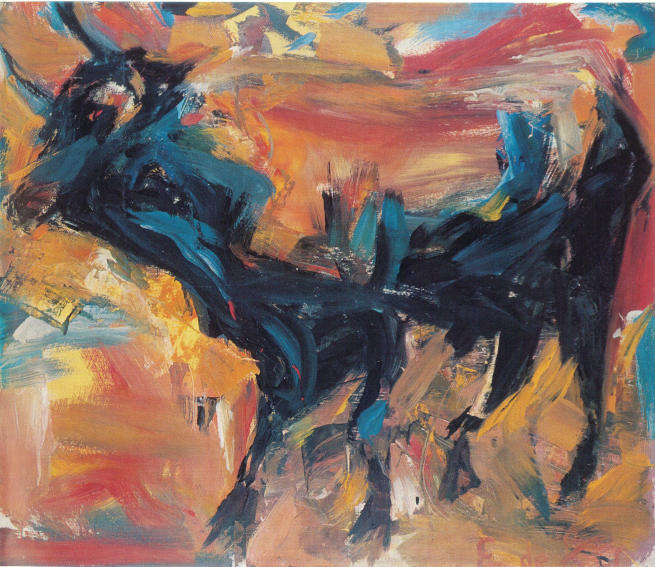
Elaine de Kooning - Sunday Afternoon, 1957. Oil on canvas. 37 3/8 x 43 1/4 in. (94.9 x 109.8 cm). Anonymous. © Elaine de Kooning Trust
Expand the Canon
I have some personal insight into this issue. Last year, after learning what I do for a living, a neighbor asked me to come over to his house to help him figure out what to do with all of the paintings his deceased mother had painted then left hanging in her home. Perusing the work, I was amazed a its maturity, complexity and lyrical beauty. I asked my neighbor where his mother studied. It turns out she attended Cooper Union with Alex Katz in the 1940s. After school, she left New York and moved to Illinois, where she had a career designing album covers. She never stopped painting, but she also never exhibited her work publicly. Convinced this was a major discovery, I told several dealers and curators about the work, but each responded with some variation of the following: other than the casual connection with Katz, there is no convincing narrative that can help them sell the public on the work. I answered that the work is convincing enough. Was I being naive?
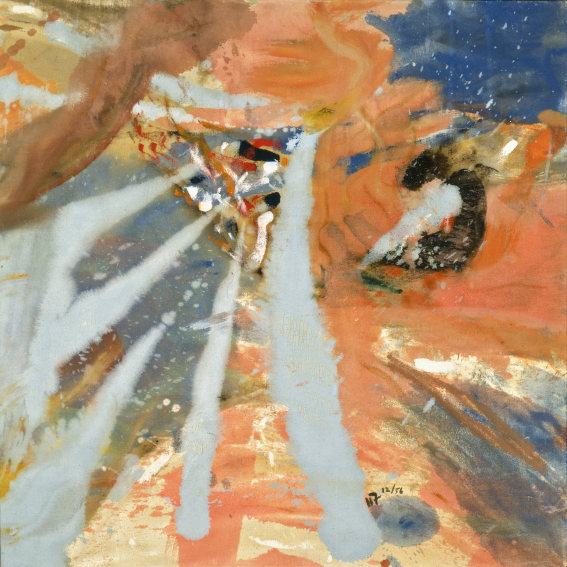
Helen Frankenthaler - Mount Sinai, 1956. Oil on canvas. 30 1/8 x 30 in. (76.5 x 76.2 cm). Collection Neuberger Museum of Art, Purchase College, State University of New York, Gift of Roy R. Neuberger, 1969.01.13. © 2019, Helen Frankenthaler Foundation, Inc. / Artists Rights Society (ARS), New York
Celebrating the women of the 9th Street Show, and rediscovering artists like Anni Albers and Carmen Herrera is important, but it is also a bit like uncovering the ruins of Pompeii: their existence is documented, and their contribution to history is undeniable. In addition to our buried cultural Pompeii, should we not also be actively seeking out our undiscovered cultural Atlantis—the hundreds, or maybe thousands of female abstract artists we can theorize must have existed, but whose work remains completely undiscovered? Sparkling Amazons picks its artists from just one show that happened one year in one city. How many other art exhibitions were held in just that same city that year? As neglected, underestimated and disparaged as they were (and they were all that—just read Ninth Street Women to find out for yourself), these women were, in a way, the entitled female artists of their generation. They had the benefit of being insiders in the New York art field of the 1950s. Who is doing the research to find the work of the female artists of the past who did not make the scene, or who showed up briefly then disappeared? Within that hidden history, I suspect, an even more beautiful heritage awaits.
Featured image: Jean Steubing - The Habitat, 1951. Oil on canvas. 18 x 24 in. (45.7 x 61 cm). Courtesy of Garvey Rita Art & Antiques, Orleans, MA.
All images used for illustrative purposes only
By Phillip Barcio
